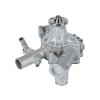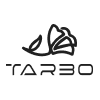Trading (ASEAN/APEC): Regional Cooperation in Trade
Note:Asia Pacific economies have cooperated in liberalising intra-regional trade through a wide array of institutional arrangements, the chief ones being the Association of Southeast Asian Nations (ASEAN) and Asia-Pacific Economic Cooperation (APEC). The following document introduces ASEAN and APEC as they pertain to trade issues. Please be aware that this is not an exhaustive discussion of ASEAN and APEC.
Association of Southeast Asian Nations (ASEAN)
What is ASEAN?
ASEAN is an organisation that was established in 1967 for the purpose of fostering political and economic cooperation between Southeast Asian countries.
Which countries are members of ASEAN?
The Member Countries are: Indonesia, Thailand, Brunei Darussalam, Singapore, Malaysia, Philippines, Vietnam, Myanmar, Cambodia, and Laos.
What is ASEAN's position on regional trade?
The tenor of ASEAN's policies and initiatives has been in favour of opening Asian markets to trade by reducing the cost of intra-regional, as well as extra-regional transactions. For instance, the ASEAN Vision 2020, adopted by ASEAN leaders in 1997, envisaged further economic integration in the region, under the auspices of the ASEAN Partnership in Dynamic Development. As well, this policy statement expressed the goal of creating an ASEAN Economic Region where there would be a free flow of goods, capital, services, and investment.
What steps has ASEAN taken to liberalise trade among Member Countries?
ASEAN has embarked on various arrangements since its inception with the view to increase trade in the region. The Preferential Trading Agreement 1977 provided tariff preferences for trade between ASEAN countries.
In 1992 in Singapore at the Fourth ASEAN Summit, the Members agreed to form an ASEAN Free Trade Area (AFTA). The goal of AFTA is to increase efficiency, productivity and competitiveness in the region's economies by eliminating tariff and non-tariff barriers. In 1992, Member Countries contemplated that AFTA would be fully implemented in 15 years; however, the date for the realisation of AFTA was initially moved up to 2003, and then to 2000 for the six original Member Countries: Indonesia; Thailand; Malaysia; Philippines; Singapore; and Brunei Darussalam.
Under this scheme, goods that are included in what is called the Inclusion List, will have low tariffs. The Inclusion List includes goods which each Member Country places in AFTA's tariff reduction arrangement. 85% of the goods on the Inclusion List will have tariffs of only 0-5% by the year 2000. By 2001, 90% of the goods on the Inclusion List will have tariffs of 0-5%. By 2002 all of the goods on the Inclusion List will have tariffs of 0-5%. Member Countries have also expressed their commitment to increase the number of items that are to be included in the Inclusion List and increase the tariff reduction to 0% as soon as practicable.
The newer ASEAN members will achieve similar tariff reductions at various dates in the mid- 2000s.
Under the Common Effective Products Tariff (CEPT) Agreement, the average regional CEPTC has declined from 12.76% in 1993 to 4.59% at the present time for products in the Inclusion List and that it is scheduled to be reduced to 3.74% in 2000, and then to 2.63% by 2003.
In the area of customs, the ASEAN Customs Policy Implementation Work Programme (PIWP) consists of a number of action plans that will harmonise customs policies and procedures by the year 2020. Some of the key objectives of this programme are:
a. modernising customs service;
b. standardising nomenclature for the uniform classification of goods;
c. enhancing transparency in the system of handling temporarily admitted goods;
d. standardising customs valuation by using the WTO Valuation Code;
e. clarifying service level targets for customs clearance;
f. simplifying and standardising the customs procedures to facilitate the movement of goods in transit; and
g. making the system of clearing goods at Customs borders more efficient.
Further, in 1998, the ASEAN Consultative Committee for Standards and Quality agreed to harmonise standards for a wide variety of products, under the ASEAN framework Agreement on Mutual Recognition Arrangements (MRAs).
Asia Pacific Economic Cooperation (APEC)
What is APEC?
APEC is an organisation that was founded in 1989 for the purpose of fostering discourse on economic cooperation in the Asia Pacific region. It has since developed into a medium in which economic cooperation and open trade are promoted. State leaders and Ministers of APEC countries meet annually
Which countries belong to APEC?
The members of APEC are: Australia, Chile, Indonesia, Malaysia, Papua New Guinea, Taiwan, Brunei Darussalam, People's Republic of China, Japan, Mexico, Philippines, Thailand, Canada, Hong Kong, Republic of Korea, New Zealand, Singapore, and the United States of America.
How is APEC relevant to trade issues?
APEC has resolved to reduce transaction costs of international trade. The "Bogor Declaration" which was made at the APEC Summit 1994 stated the objective of achieving "free and open trade and investment". The Declaration expresses a plan to remove trade barriers in APEC's developed countries by 2010 and its developing countries by 2020. APEC has also made the harmonisation of customs procedures and increasing market access to the region important priorities.







